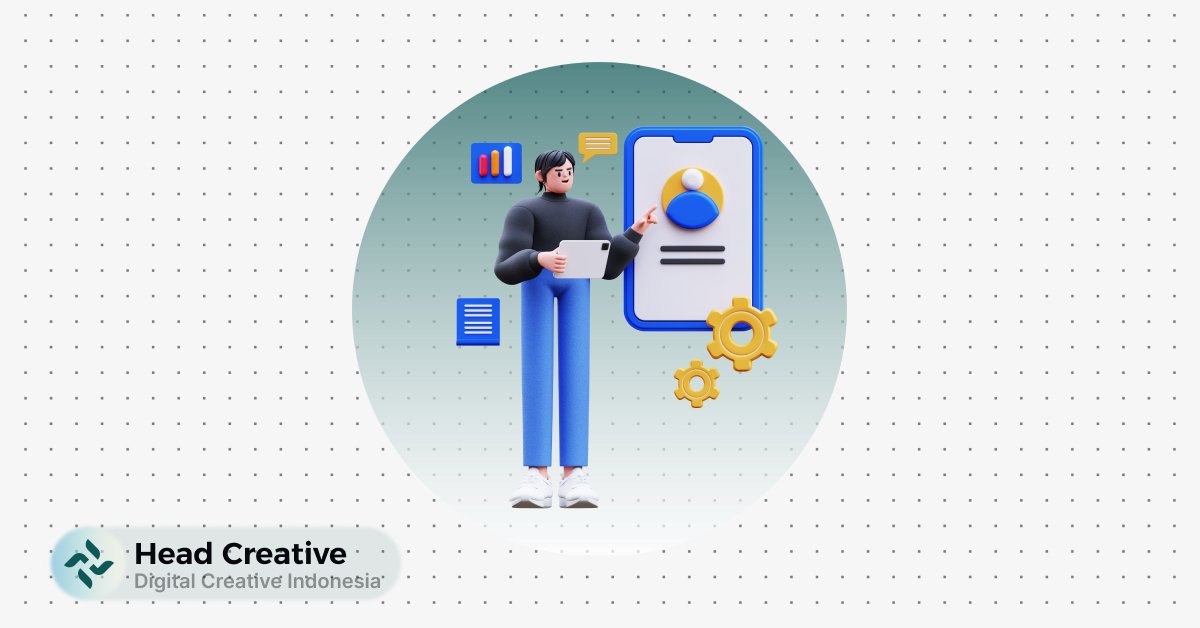What Is an API (Application Programming Interface)?
In the ever-evolving world of web development, the term API (Application Programming Interface) is frequently heard. But what exactly is an API, and why is it so important for web developers, especially beginners? This article will explore the definition of an API, the importance of understanding it, and its role in modern web development.
A Brief Definition of API
An API (Application Programming Interface) is an interface that allows two software systems to communicate with each other. Simply put, an API acts as a “bridge” that connects one application to another, enabling efficient data and functionality exchange.
Imagine an API as a waiter in a restaurant. You (the user) place an order through the waiter (API), who then conveys your order to the kitchen (server). Once the food is ready, the waiter delivers it back to you. In this scenario, the waiter doesn’t prepare the food but plays a crucial role in passing requests and delivering results.
Common Examples of API in Everyday Life:
- Google Maps API: Integrates maps into applications or websites.
- Payment Gateway API: Processes online payments.
- Social Media API: Connects apps with platforms like Facebook or Twitter.
Why Understanding APIs Is Important for Web Developers
For a web developer, understanding Application Programming Interfaces isn’t just an additional skill—it’s a crucial necessity. Here are some reasons why APIs are important:
- Enhances Development Efficiency
APIs allow developers to reuse existing functions without building everything from scratch, saving time and effort in the development process. - Enables Integration with Third-Party Services
APIs let your application connect with external services like payment systems, maps, analytics, or social media without needing to understand their internal technical details. - Supports Application Scalability
APIs make it easy to expand applications. You can add new features or integrate the latest technologies without overhauling the entire system. - Improves Security
APIs help manage data access securely. For example, APIs can control who can access specific data through authentication and authorization systems.
The Role of APIs in Modern Web Development
In today’s digital era, APIs are the backbone of various applications—whether web, mobile, or desktop. They play a vital role in creating integrated and efficient technological ecosystems.
- As a Communication Bridge Between Applications
APIs allow different applications, even those built with different programming languages or platforms, to communicate with each other. This is especially important in complex environments like large enterprises or cloud-based services. - Supporting Microservices Architecture
In modern development, many companies adopt microservices architecture. APIs are key to connecting small services (microservices) so they work harmoniously as a unified application. - Enabling Process Automation
APIs can automate various tasks, such as data management, updating information, or running specific scripts without direct human intervention. - Enhancing User Experience (UX)
With APIs, applications can offer more interactive and responsive experiences. Features like live chat, real-time notifications, or personalized product recommendations all rely on APIs.
How APIs Work: Basic Concepts to Understand
Understanding how APIs work is essential for anyone looking to master web development. This basic concept involves how data is exchanged between a client and a server through a request-response mechanism.
Explaining Client, Server, and Request-Response
In the API ecosystem, there are three main components:
- Client: The application or device that requests data (e.g., your browser when accessing a website).
- Server: The system that stores data or provides services requested by the client.
- Request-Response: The mechanism where the client sends a request to the server, and the server responds with the requested data or result.
Simple Example:
- You open a weather app on your phone (client).
- The app sends a request to the weather server to get the latest data (request).
- The server responds with the current weather data (response).
Commonly Used Protocols
APIs work using various protocols that define how data is sent and received. Some of the most common protocols include:
- HTTP (HyperText Transfer Protocol): The basic protocol used for data transmission on the web.
- REST (Representational State Transfer): A popular API architecture style using HTTP, known for its simplicity.
- SOAP (Simple Object Access Protocol): A more formal protocol with strict rules, often used in enterprise environments.
- GraphQL: An API protocol that allows clients to request specific data, making it more efficient than REST in some cases.
A Simple API Workflow Example
Let’s look at a real-world example of using an API, such as the Google Maps API:
- Client: A ride-hailing app like Uber or Lyft.
- Request: When you enter a destination address, the app sends a request to the Google Maps API to get the best route.
- Server: The Google Maps server processes the request.
- Response: The API returns data in the form of maps, estimated travel time, and distance to your app.
This process happens in seconds, allowing the application to function quickly and responsively.
Read Also: A Guide to Using Content Delivery Networks (CDNs) for Websites
Types of APIs and Their Examples
In the world of development, Application Programming Interfaces (APIs) come in various types tailored to specific needs. Understanding these API types will help you choose and implement the most suitable API for your project.
1. Open API (Public API)
Open APIs, also known as Public APIs, are accessible to anyone without specific restrictions. These APIs are typically provided by tech companies to encourage integration with third-party applications.
Examples of Open APIs:
- Twitter API: Used to access tweet data, user profiles, and analytics.
- Google Maps API: Allows developers to display maps, routes, and locations within their applications.
- OpenWeather API: Provides up-to-date weather information that can be integrated into weather apps.
2. Private API
Private APIs are designed specifically for internal use within an organization. These APIs are not publicly available and are typically used to connect internal systems or services.
Benefits of Private APIs:
- Improves Efficiency: Enhances workflows between internal systems.
- Strengthens Data Security: Provides better control over company data.
Examples of Private APIs:
- Google’s Internal API: Used to connect various internal Google services, such as employee data and project management systems.
3. Partner API
Partner APIs are designed for business partnerships. These APIs are not open to the public but are accessible to specific business partners under a partnership agreement.
Advantages of Partner APIs:
- Enables Closer Collaboration: Facilitates tighter integration between companies.
- Controlled Data Access: Offers more control over who can access sensitive data.
Examples of Partner APIs:
- Payment Gateway API: Used by e-commerce companies to integrate payment systems like Stripe or PayPal.
4. Composite API
Composite APIs allow users to combine multiple API requests into a single call. This is highly efficient, especially when you need to retrieve data from different sources simultaneously.
Benefits of Composite APIs:
- Reduces Server Requests: Improves application performance by minimizing the number of requests.
- Simplifies Data Integration: Makes it easier to consolidate data from various services.
Examples of Composite APIs:
- Salesforce Composite API: Enables the integration of sales, customer, and analytics data in a single API call.
Take Advantage of Our Services: Website Development Solutions
Benefits of Using APIs for Web Developers
Using Application Programming Interfaces (APIs) offers significant benefits for web developers, whether for developing simple or complex applications. Here are some key advantages:
1. Enhances Application Development Efficiency
APIs allow developers to leverage existing functionalities without having to build them from scratch. This saves time and resources, enabling development teams to focus more on the core features of the application.
Example: Using the Google Maps API to add interactive maps to an application without having to build a mapping system from scratch.
2. Enables Integration with Third-Party Services
APIs open up opportunities to integrate applications with various external services, such as payment systems, analytics, or social media. This allows developers to create feature-rich applications.
Example: Integrating with Payment Gateway APIs like PayPal or Stripe to process online transactions securely and quickly.
3. Flexibility in Developing New Features
With APIs, developers can add new features or expand the functionality of applications without having to overhaul the entire codebase. APIs provide standardized interfaces that simplify continuous development.
Example: Adding a login feature using Google or Facebook accounts via Social Media APIs without altering the existing application architecture.
4. Supports Scalability and System Automation
APIs support scalability by allowing applications to grow according to needs. Additionally, APIs enable the automation of various processes, such as data synchronization or batch processing, without manual intervention.
Example: Using a Cloud Storage API to automatically store and manage user data on a large scale.
How to Use APIs in Application Development
Effectively utilizing Application Programming Interfaces requires an understanding of how to implement them in application development. Here are basic steps, useful tools, and a simple case study to help you get started.
Basic Steps for Using APIs
- Understanding API Documentation:
- Documentation is the official guide on how to use an API, including endpoints, parameters, data formats, and examples of requests and responses.
- Carefully read the documentation to understand how the API functions.
- Making Requests:
- API requests can be made using various HTTP methods, such as GET (retrieve data), POST (send data), PUT (update data), and DELETE (remove data).
- Identify the appropriate API endpoint, then create a request using programming code or tools like Postman.
- Parsing Data:
- Data received from APIs is usually in JSON or XML format.
- Parsing data means converting these formats into data structures that can be used within your application.
Useful Tools for API Testing
- Postman: A popular tool for testing and managing APIs. It allows you to create requests, view responses, and manage API collections easily.
- cURL: A command-line tool used to send HTTP requests. It’s very useful for quick API debugging.
- Insomnia: An alternative to Postman, offering a simple interface for testing RESTful APIs and GraphQL.
Simple Case Study: Fetching Data Using a Public API
As an example, let’s retrieve news data using the News API:
- Register and Get an API Key:
Visit the News API website and sign up to obtain an API key. - Making a Request:
- Parsing Data:
After receiving the response in JSON format, parse the data within your application to display it to users.
Conclusion
In today’s fast-paced digital era, APIs play a crucial role in modern application development. APIs are not just technical tools—they are the foundation that enables system integration, work efficiency, and innovation in developing web, mobile, and desktop applications.
Understanding what APIs are, how they work, their types, benefits, and how to use them is a fundamental skill for every web developer. By mastering these concepts, developers can build more sophisticated, integrated, and responsive applications that meet user needs.
Whether it’s to enhance development efficiency, support integration with third-party services, or automate various business processes, APIs open up new opportunities in the world of technology. So, start experimenting with public APIs, explore API documentation, and take your application development to the next level.


